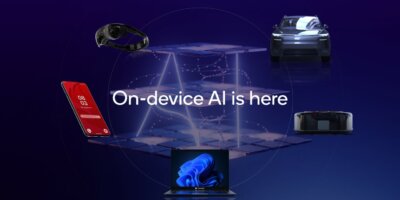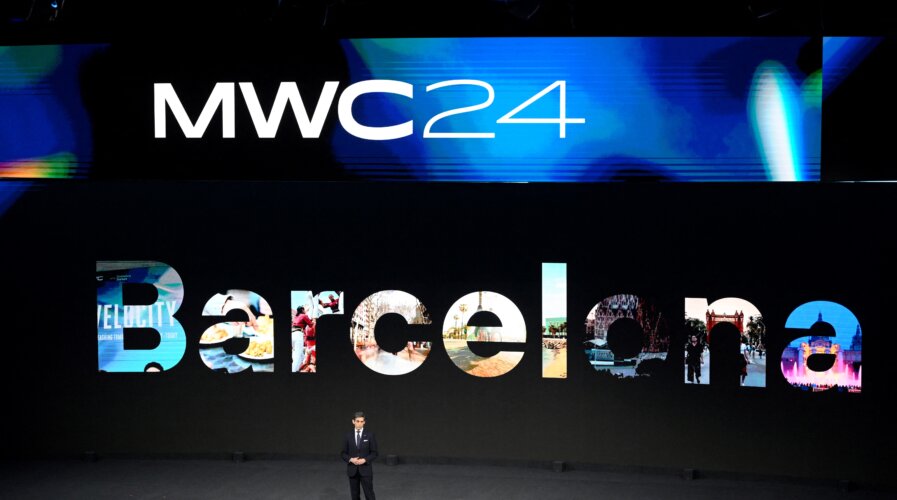
Telefonica’s chairman and CEO, Jose Maria Alvarez-Pallete talks on stage during the Mobile World Congress (MWC). (Photo by Josep LAGO/AFP).
Five cool gadgets announced at MWC 2024
- MWC 2024 kicked off with a range of new innovations unveiled.
- The world’s biggest mobile phone fair throws open its doors in Barcelona with the sector looking to AI to try and reverse declining sales.
- Bendable phones and transparent laptops among prototype gadgets unveiled.
Every year, there are two major global tech events whereby tech companies showcase their latest gadgets and accessories. The first one is the Consumer Electronics Show (CES) which is held at the beginning of the year in the US. Announcements made at this event include new gadgets, household devices and new vehicles.
The second major event is the Mobile World Congress (MWC), held annually in Barcelona, Spain. MWC has become the showcase event for all mobile and networking announcements and breakthroughs with companies announcing innovations and discoveries each year. It’s also an event where major network providers come together to discuss the future of networking and such.
At MWC 2024, The AI-RAN Alliance, a new collaborative initiative aimed at integrating AI into cellular technology to further advance radio access network (RAN) technology and mobile networks, was launched. Bringing together technology, industry, and academic institutions, the alliance’s founding members include AWS, Arm, DeepSig, Telefonaktiebolaget, Ericsson, Microsoft, Nokia, Northeastern University, Nvidia, Samsung Electronics, SoftBank and T-Mobile.
The group’s mission is to enhance mobile network efficiency, reduce power consumption, and retrofit existing infrastructure, setting the stage for unlocking new economic opportunities for telecommunications companies with AI, facilitated by 5G and 6G.
Apart from the Alliance, Huawei unveiled the 5.5G intelligent core network solution. 2024 is the first year for commercialization of 5.5G, with the 5.5G intelligent core network, as an important part of 5.5G, incorporating service intelligence, network intelligence, and O&M intelligence. 5.5G technology will improve both business value and development potential.
“We’re rapidly approaching an intelligent world,” said Li. “As the demands on networks have increased, 5.5G has become a key step on the path to the intelligent world. 5.5G is expected to enter commercial use in 2024. So, let’s build today’s networks for tomorrow’s applications to advance the intelligent world,” commented Li Peng, Huawei’s corporate senior vice president and president of ICT sales & service.
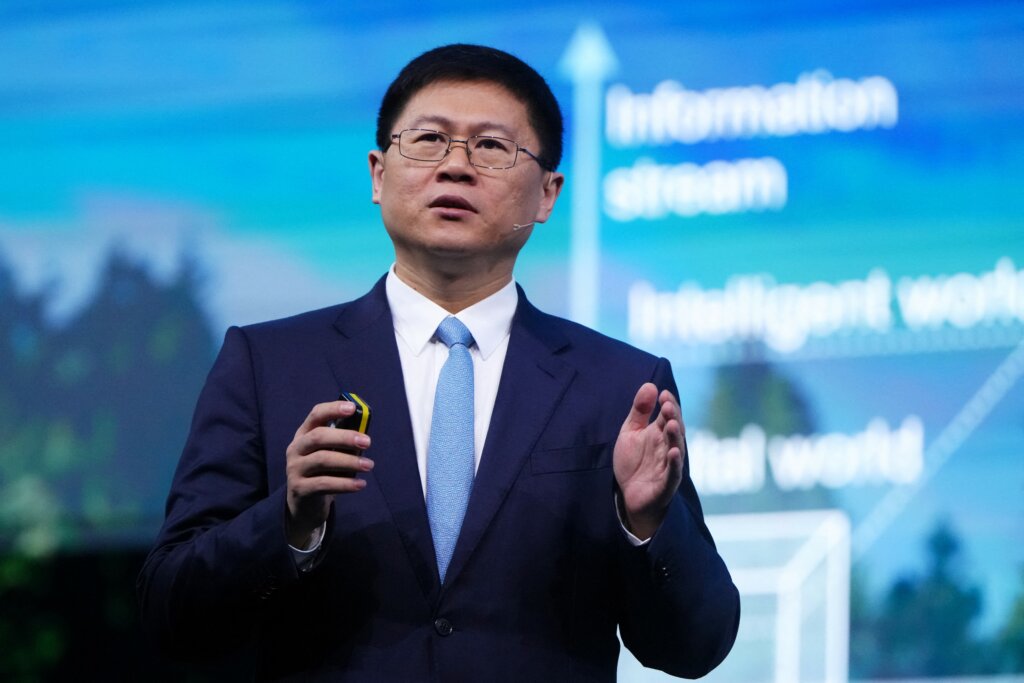
Huawei’s president of information and communications technology sales and service Peng Li gives a conference at the Mobile World Congress (MWC). (Photo by PAU BARRENA/AFP).
The gadgets of MWC 2024
At MWC 2024, AI dominated most of the major innovations announced. Among them include the unveiling of new AI PCs and laptops by Lenovo, Dell and others. Chip companies like Qualcomm and Intel also announced several new innovations and enhancements to their products.
Apart from these, several new gadgets were also unveiled. These gadgets are often just prototypes, but most of them are advanced enough, to break down the barriers of what was once seemingly impossible.
As such, Tech Wire Asia takes a look at five fascinating new gadgets unveiled at MWC 2024.
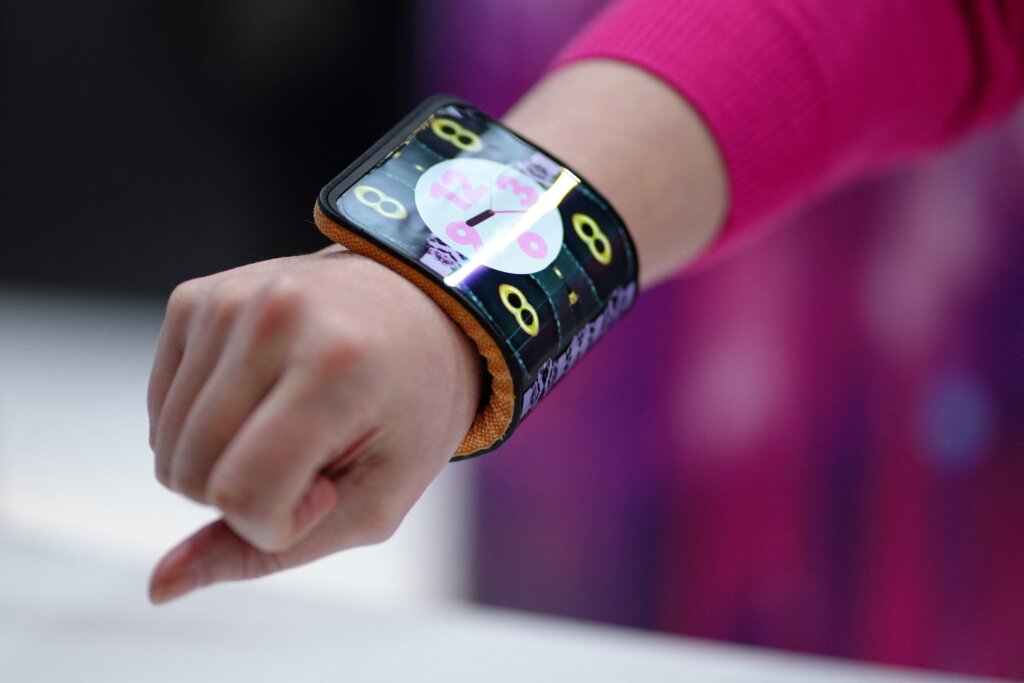
A model presents a Motorola prototype with an adaptive display used as a bracelet during the Mobile World Congress (MWC). (Photo by PAU BARRENA/AFP).
Bend it like Motorola
The world has already witnessed the foldable phone making a comeback over the last few years. In fact, the foldable phone market continues to show positive growth with manufacturers predicting higher sales in 2024.
Motorola decided to take another approach to its devices. Motorola is already known for its foldable phones of the late 90s and early 2000s. But despite launching new models, Motorola remains a brand that is nowhere near the success of Apple, Samsung and Chinese manufacturers.
As such, Motorola has made the bold move to introduce the world’s first bendable phone. A concept product, Motorola unveiled the progress of the display technology, which is surely a standout in the smartphone market.
The device is capable of bending into various sizes. This includes being wrapped around the wrist or even a table. According to a report by CNBC, the mechanism that allows the phone to bend was described by the Motorola representative as similar to the way the human spine works.
The transparent laptop
In an era where privacy is essential, having a transparent monitor may not be the ideal choice. In fact, users would surely want a device that would give them the most protection and not allow others to view that screen. With that said, why would anyone make a transparent screen on a laptop?
Amazingly then, the researchers and developers at Lenovo have built a prototype that has that capability. At MWC 2024, Lenovo showcased the prototype, which is equipped with a trackpad and a touch keyboard with a stylus.
In a demonstration, a Lenovo representative showed that the transparent screen is not just like working on a piece of glass. Instead, it is also capable of detecting objects in the background. The video below shows more details about the product.
An app less phone
An app less phone would surely be a basic mobile phone that existed before smartphones. While some of the old-school mobile phones still have a cult user base, the app less phone is actually more than that. Put simply, it’s a smartphone that can function without the need to download multiple apps.
According to a report by Reuters, Deutsche Telekom showcased a futuristic smartphone concept at MWC 2024 that relies on AI rather than apps to handle users’ specific needs.
The German company said the concept, which it is showcasing on its “T-phone” device, will have an app-free user interface developed in collaboration with partners Qualcomm and Brain.
“I can tell you that in 5-10 years from now, nobody will use apps anymore,” said CEO Tim Hoettges in a keynote presentation at MWC 2024.
Examples of what the phone could do include responding to prompts and generating tailored recommendations for travel destinations, buying a product for its owner, or sending pictures and videos to contacts, the company said in a presentation.
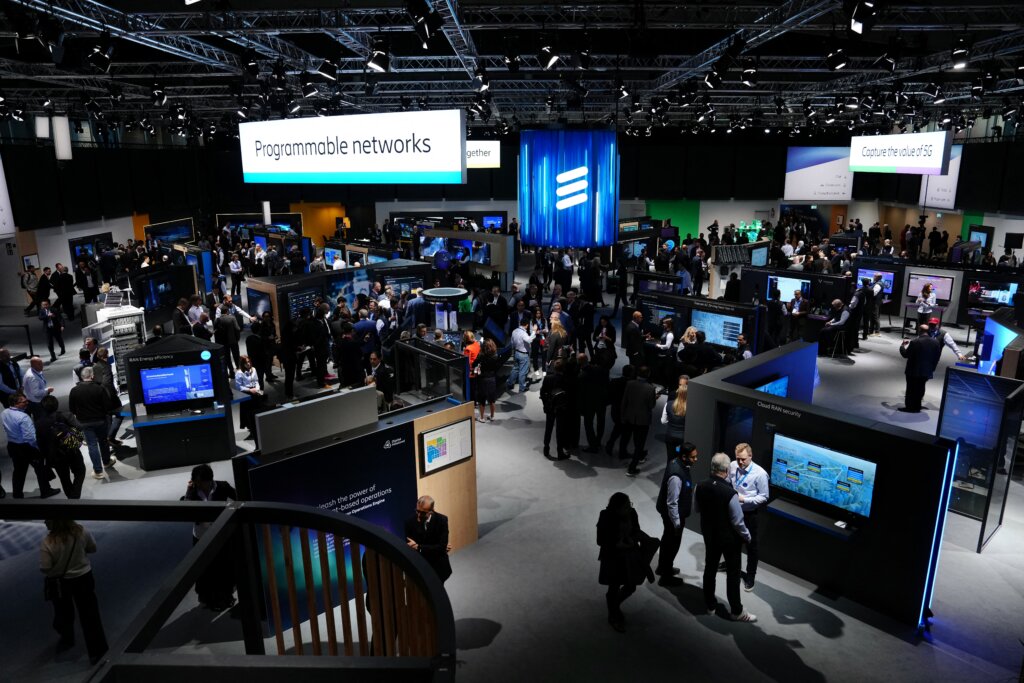
Visitors look at Swedish multinational networking and telecommunications company Ericsson stand during the Mobile World Congress (MWC), the telecom industry’s biggest annual gathering, in Barcelona on February 27, 2024. (Photo by PAU BARRENA/AFP).
A 5G bicycle
Orbic, an international leader in sustainable electronic innovation, unveiled the world’s first 5G-enabled eBike equipped with AI object avoidance and collision detection technology. Orbic’s new technology actively monitors the rear surroundings of the eBike and alerts riders to potential hazards, such as oncoming vehicles. The groundbreaking technology establishes a new era in smart transportation, prioritizing rider safety, advanced 5G connectivity, and environmental sustainability.
The 5G eBike, capable of reaching up to 45km/h, incorporates an advanced AI avoidance detection system that leverages a sensor with a 140-degree field of view strategically placed on the rear of the bike. The sensor provides continuous surveillance of the rider’s environment, delivering instant audible and visual alerts to enhance awareness and safety.
The 5G eBike is equipped with a stunning front-facing 64MP camera tailor-made for capturing and livestreaming every adventure, an 8MP camera on the front display perfect for video calls, and a 2MP rear camera for enhanced rider safety, collision avoidance and object detection.
At the heart of the 5G eBike is its high-speed 5G connectivity, ensuring less lag time between user actions and optimizing the speed of communications for a seamless and responsive user experience.

nubia Pad 3D II innovatively integrates 5G technology.
A real 3D experience
While everyone enjoys the 3D experience of movies, wearing 3D goggles can be a tedious affair for some, especially for those already wearing glasses. Fortunately, technology is now letting users enjoy 3D without the need to wear any enhanced eyewear.
At MWC 2024, ZTE launched the world’s first 5G+AI eyewear-free 3D tablet, nubia Pad 3D II, which provides consumers with a truly immersive eyewear-free 3D experience.
Enhanced by an AI processing engine, the second-generation nubia Pad 3D II distinguishes itself with its fully improved 3D display technology, allowing users to enjoy a unique eyewear-free 3D experience anytime, anywhere. Equipped with unique liquid crystal lenses and powered by integrated image processing algorithms, it renders 3D images with enhanced realism and natural vibrancy.
Compared to the first generation, this tablet has achieved an 80% increase in 3D resolution and a 100% boost in 3D brightness, with comprehensive optimization in 3D crosstalk, 3D color, and 3D power efficiency, thereby enhancing users’ 3D visual experience.
The nubia Pad 3D II has also made significant advancements in AI algorithms. Equipped with an AI eye-tracking engine utilizing high-speed visual sensors and eye-detection algorithms, the tablet greatly enhances response speed and enables accurate positioning of users’ eyes in real-time, delivering the 3D image directly for a more natural and realistic 3D display experience. With an 86-degree ultra-wide viewing angle, users can enjoy a flawless 3D experience from almost any direction.
READ MORE
- 3 Steps to Successfully Automate Copilot for Microsoft 365 Implementation
- Trustworthy AI – the Promise of Enterprise-Friendly Generative Machine Learning with Dell and NVIDIA
- Strategies for Democratizing GenAI
- The criticality of endpoint management in cybersecurity and operations
- Ethical AI: The renewed importance of safeguarding data and customer privacy in Generative AI applications

